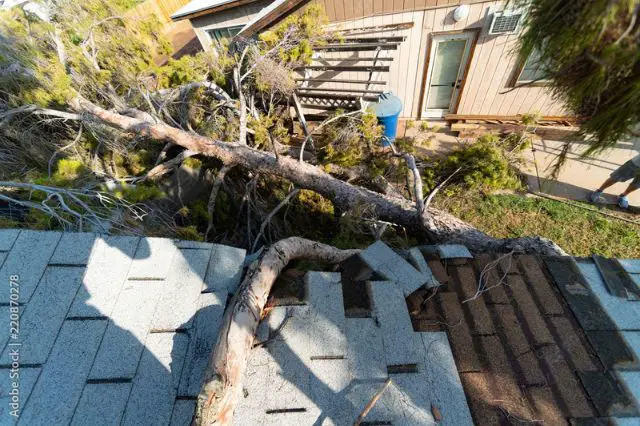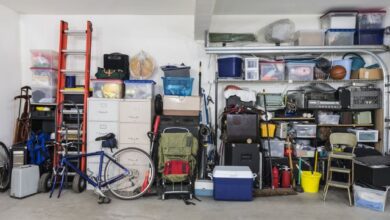9 Essential Steps for Effective Storm Damage Repair

Severe weather events can cause severe damage to your roof, walls, and structural components.
What should you do if you’re in this situation?
You can decrease the amount of time your home is in need of repairs and be back to normal in no time. The faster you start your repair, the more quickly you’ll be whole again.
However, many homeowners are unsure about how to begin. What kind of storm damage repair is necessary and how do you get the process started?
Here’s a guide on how to fix storm damage to bring your home back to normal.
1. Ensure Safety
Safety is your top-most priority. It’s crucial to turn off all utilities, like gas and electricity, to avoid accidents. Loose wires or gas leaks can cause severe harm and should be handled by professionals only.
Avoid stepping into rooms with sagging ceilings from water accumulation. Be wary of broken glass or sharp debris scattered around. If the structural integrity of your property is compromised, do not walk on floors or go upstairs as they may collapse.
Remember, your safety is paramount, so when in doubt, wait for professional help.
2. Assess the Damage
Take plenty of photos and videos of the damage for record-keeping. Look for subtle signs too, like damp floors or swollen doors. Don’t forget to check the exterior of your property.
Look for fallen trees or branches, damage to your siding, or dents in your gutter. It is crucial to look for potential hazards such as downed power lines or compromised structures.
Look for roof leaks, broken windows, water stains on walls or ceilings, and any other structural damages. It is important to document all the damages you find as this will be useful for insurance claims and future reference.
3. Contact Your Insurance Company
The aftermath of a storm is a crucial time to get in touch with your insurance company. Make this a priority. If you have bundled home and car insurance, reach out to them about both policies. They will send an adjuster to examine your property.
The adjuster’s role is to assess the storm damage. Your photos, videos, and notes will be vital in this process. Remember to show the adjuster all the damage details. This will help you get the compensation you deserve.
Ask the adjuster questions about things that concern you. This includes your policy’s coverage limits or how long the claim process will take.
Keep all the communication records. They might come in handy later. Remember, your insurance is there to help you through this. Don’t hesitate to reach out to them.
4. Prioritize Repairs
Start by identifying the most critical damages that need immediate attention. A compromised roof, for instance, can lead to further water damage and mold, making it a top priority. Broken windows too, if left unattended, can let in rain or pests, worsening the situation.
Next, consider the damages that may not be urgent but are still significant. This could include water-damaged floors, damaged siding, or a fallen tree in the backyard. While they can wait a little, they should not be ignored for long.
Remember, the goal is to get your property back to its pre-storm condition. Prioritizing repairs helps you achieve that in a safe and efficient manner.
5. Hire a Professional
Depending on the extent of the damage, it may be necessary to hire a professional contractor for repairs. They have the know-how, experience, and the right tools to handle severe damage. These professionals can analyze the entire property, identify hidden problems, and propose the best solutions.
When hiring, ensure the contractor has a good reputation and positive reviews. Always ask for their credentials and look for specific experience in storm damage repair. This provides confidence in their ability to deliver quality work.
6. Obtain Multiple Quotes
When seeking professional assistance for damage repair, it is essential to get multiple quotes. This allows you to compare the pricing structure, scope of work, and services offered by different contractors. Make sure to get at least three quotes to have a good pool for comparison.
Don’t make the mistake of choosing a contractor based solely on price. The lowest quote may not always be the best. Carefully assess the details of each quote. Look at the materials to be used, timelines for the project, and the contractor’s experience specifically with storm damage repair.
7. Restoration Plan and Permitting
The plan should detail the necessary repairs and how they will be executed. It should also include time frames for each repair job.
You need to consider permitting as well. Many towns and cities require permits for certain types of repair work, especially those involving structural changes. Make sure to check with your local municipality about the need for permits, as working without them can result in fines or legal issues.
8. Restoration Work
Once the plan is finalized and permits are obtained, the restoration process begins. Ensure open communication with the contractors, overseeing their progress and addressing any concerns that may arise.
Focus on repairing structural damages. Things like broken windows and doors, damaged roofs, and compromised walls and floors demand attention.
The restoration phase also includes repainting walls and ceilings, replacing damaged flooring, and updating furniture and appliances.
9. Inspection and Completion
After all the repairs are complete, a thorough inspection is necessary. This is the moment to ensure the repairs meet your satisfaction and that all storm damages have been addressed. Walk through your property alongside the contractor. Check each repair meticulously.
If you notice any issues or unfinished jobs, point them out. The contractor should address these before declaring the job complete.
Once you’re satisfied with the repair work, the project moves into the completion phase. You can then sign off the project, marking the end of the storm damage repair process. Remember, a thorough inspection guarantees the quality of the work and assures you that your property is once again safe and secure.
Successfully Navigating Storm Damage Repair
Storm damage repair is a challenging journey, but with a methodical approach and the right support, the path to recovery can be smoother. Remember, patience is key, and while the process might be arduous, the end result is the restoration of your cherished space.
Keep in mind that storm damage repair is not just about fixing physical damages, but also restoring a sense of safety and security in your home or business. So take the time to properly assess and repair any damages, and don’t hesitate to reach out for help if needed.
Did you find this article helpful? Visit more of our blogs!





